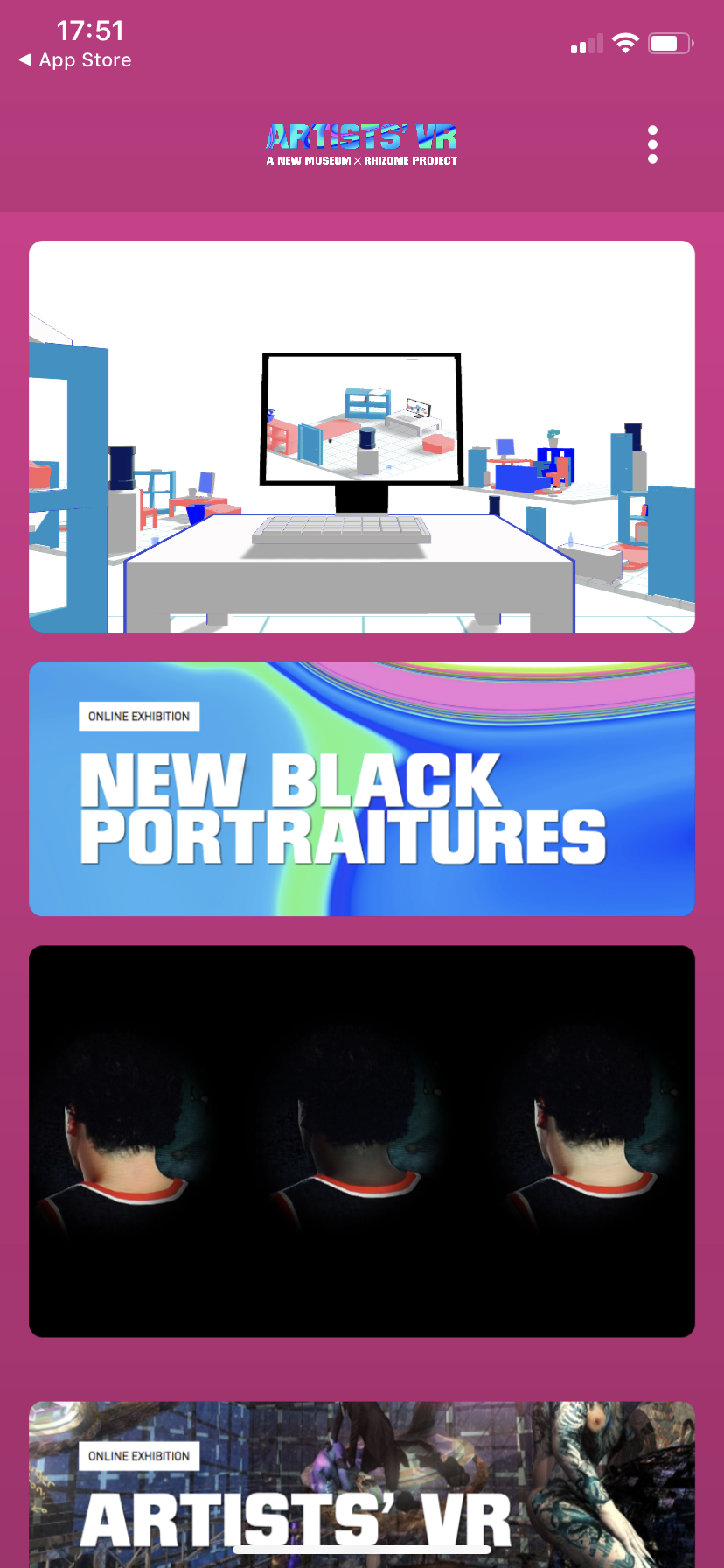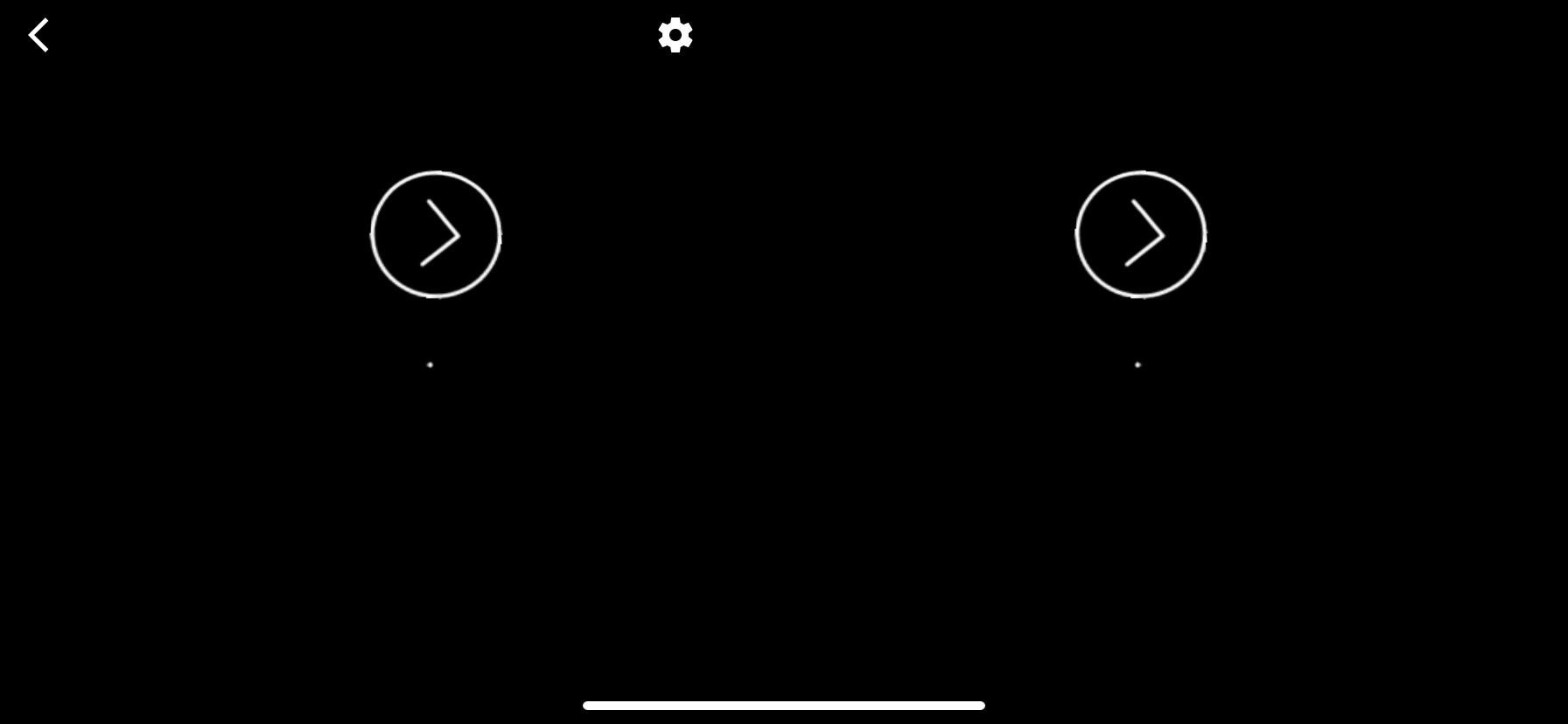Introduction
Colin Post is an Assistant Professor in Library and Information Science at the University of North Carolina at Greensboro. With a deep interest in technology, such as virtual reality (VR) and creative programming languages, Post has conducted research on historical perspectives on these technologies as well as on relevant preservation issues at the intersection of cultural production, art history, and information science. In this interview, Post makes great suggestions specifically related to digital preservation for developers in addition to sharing about apps that he uses in his daily life. He also introduces an interesting app called First Look: Artists' VR to arts managers. Following this interview, a product review will show how to navigate this application and evaluate its pros and cons for anyone interested in using a mobile app to showcase VR artwork.
Interview
Image 1: A screenshot from Post’s cell phone. Source: Colin Post.
QL: What are the apps you use every day and why do you like them?
CP: I'm actually not a super-heavy app user, as I prefer working on a bigger screen, typically opting for a laptop if not a desktop. I'm probably becoming a dinosaur in this way...That said, I really like using apps that give me interesting tidbits of information. I use the Wikipedia app on my phone every day, and I love looking at the featured article and top-read articles. It's interesting to see what's trending on Wikipedia as this gives me a sense of what people are browsing.
QL: Is there an app that surprised you with its usefulness?
CP: My wife and I (somewhat) recently welcomed a baby into the world—our daughter 18 months old now. The most useful app during this time, though, has not been anything specifically related to baby-rearing but rather various audiobook apps. I never used to be an audiobook listener, preferring to read hard copy books, but audiobooks have become a preferred format now that my hands are often literally quite full. My local library uses OverDrive to deliver e-books and audiobooks, and on the whole, it's a fantastic service.
QL: Is there an app you think developers should be working on?
CP: There's not one app that I think developers should be working on in particular, but a general frustration I have is the lack of backwards compatibility for apps with older models of phones or older mobile operating systems. The relentless upgrade cycle (to newer devices, newer operating systems, and so on) is really detrimental for the arts and cultural preservation, since things that worked yesterday (literally) might not work tomorrow. I recognize that this is largely a problem from Apple and the other device manufacturers, but app developers can work to make apps function on older systems for as long as possible.
QL: If you could recommend one app to arts managers, what would it be?
CP: I'll put in a plug for the "First Look" app that the new media arts organization Rhizome recently put out as part of their initiative to spotlight new and emerging arts projects engaged with digital technologies. It's a great example of how arts organizations can find new ways to make art available to viewers, especially at a time when physical access to arts institutions is quite limited.
First Look: Artists' VR Review
Image 2: A screenshot of First Look: Artists' VR. Source: Author.
In the form of a free mobile application, First Look: Artists' VR is an online exhibition that holds eight virtual reality artworks—”Intern Purgatory” by Tough Guy Mountain, “Away with You, Man Mask” by Rachel Rossin, “Arcology” by Peter Burr, “An Elegy for Ancestors” by Jayson Musson, “Domestika” by Jacolby Satterwhite, “rebirth_redirect” by Jeremy Couillard, and “Transdimensional Serpent” by Jon Rafman. As a part of First Look, a digital art commissioning and exhibition program launched in 2012 by the New Museum and Rhizome, EEVO developed the application. EEVO is a VR cloud service platform and editor that helps content creators manage their interactive applications and innovate immersive experiences.
Downloadable on both iOS and Android app stores, First Look: Artists' VR is compatible with iPhone, iPad, and iPod touch with iOS 10.0 or later, or mobile devices with Android 4.4 and up, allowing various users to enjoy the VR artworks. With a VR cardboard viewer, users can experience an even better visual effect.
What problems does the app solve?
The application enables these eight artworks to be viewed in the form of 360-degree virtual reality videos for the first time, before which some of them were only available in a museum setting. With a mobile device and a cardboard viewer, audiences can get immersive artistic experience typically provided by exhibitions or gaming systems. In this way, the application increases such experiences’ accessibility rather than being some auxiliary service available at museum or gallery spaces. Also, by curating and storing emerging artists' creation on a free, accessible application instead of online streaming platforms, First Look: Artists' VR helps to introduce artists while protecting copyright. Even though users can have screenshots or screen recordings, there is no way to have HD copies of these artworks.
How does the app work?
Image 3: Screenshots from First Look: Artists’ VR. Source: Author.
Opening the application, users will directly see the eight artworks on the home page. Except for the two visuals as banners of the online exhibition, each of the other images links to the introduction page of an artwork, where users can click on the “download” button. After clicking "watch" when it shows up, the interface asks users to select whether they are using a cardboard viewer or not. If the answer is "yes," then the application will instruct users to place their devices into the cardboard headset or switch to another viewer by scanning a QR code. Next, by moving the viewer around and aligning the two dots on screen with the two circles that represent eye positions, users can activate the artwork. Notably, users can choose the cardboard mode even if they do have one, which means they can see the screen get divided into two identical parts as it would for cardboard users. Users without cardboard should instead select the non-cardboard mode and then change the view by moving their phone around. While playing with the application, users can also fast-forward or rewind an artwork in either viewing mode simply by clicking the screen and selecting corresponding buttons.
How to align viewing angles on the app
Pros and Cons
Pros:
Free application
Small application size (84M for iOS; 18M for Android)
Compatibility with various systems and mobile devices
Fast loading speed (only takes a second to click through artworks or go back to the homepage)
Easy-to-understand interfaces
Cutting-edge digital artworks by emerging artists
No need to leave for other places or put on heavy VR headsets
Clear visual and audio effects for non-cardboard users
The low cost of cardboard headsets as supporting gear for this app
Cons:
A cardboard VR headset needed for the best experience
The app does not have any functions except downloading and watching artworks
Monotonous feeling for non-cardboard users
Small number of artworks presented
Infrequent updates (However, this may be good for the stability of the artworks stored in the app.)
The app does not link to any external websites, such as artists’ introduction pages
Only one function in the settings, which is "Delete all Downloads"
Potential vertigo
Conclusion
First Look: Artists' VR makes contributions on both the user side and the artist side as it raises the accessibility of immersive art experiences, and meanwhile, protects artworks from copyright infringement that often happens on open platforms. While it is easy and fascinating to watch each art piece on this app, audiences who are unfamiliar with new media art and are unlikely to search for such content actively may not know about this application since the app is not publicized very much. Therefore, the organizers of the First Look program could consider making the app more playful and promoting the application to a wider range of people by collaborating with more diverse artists and organizations, which would ultimately lay a foundation for greater accessibility.





